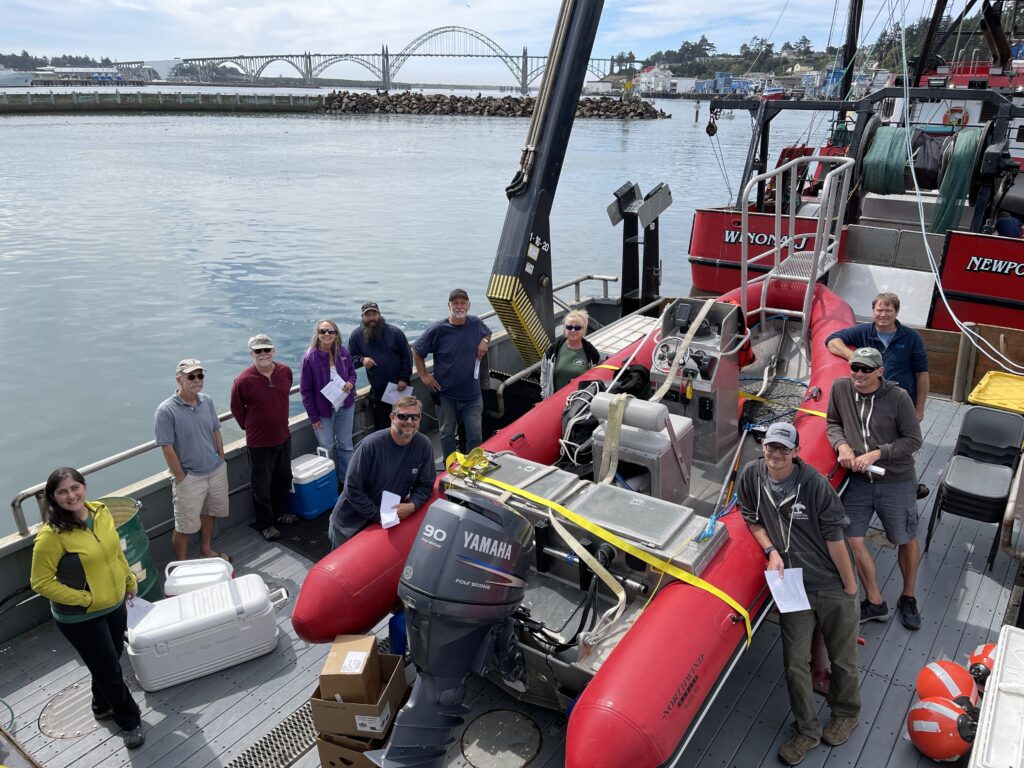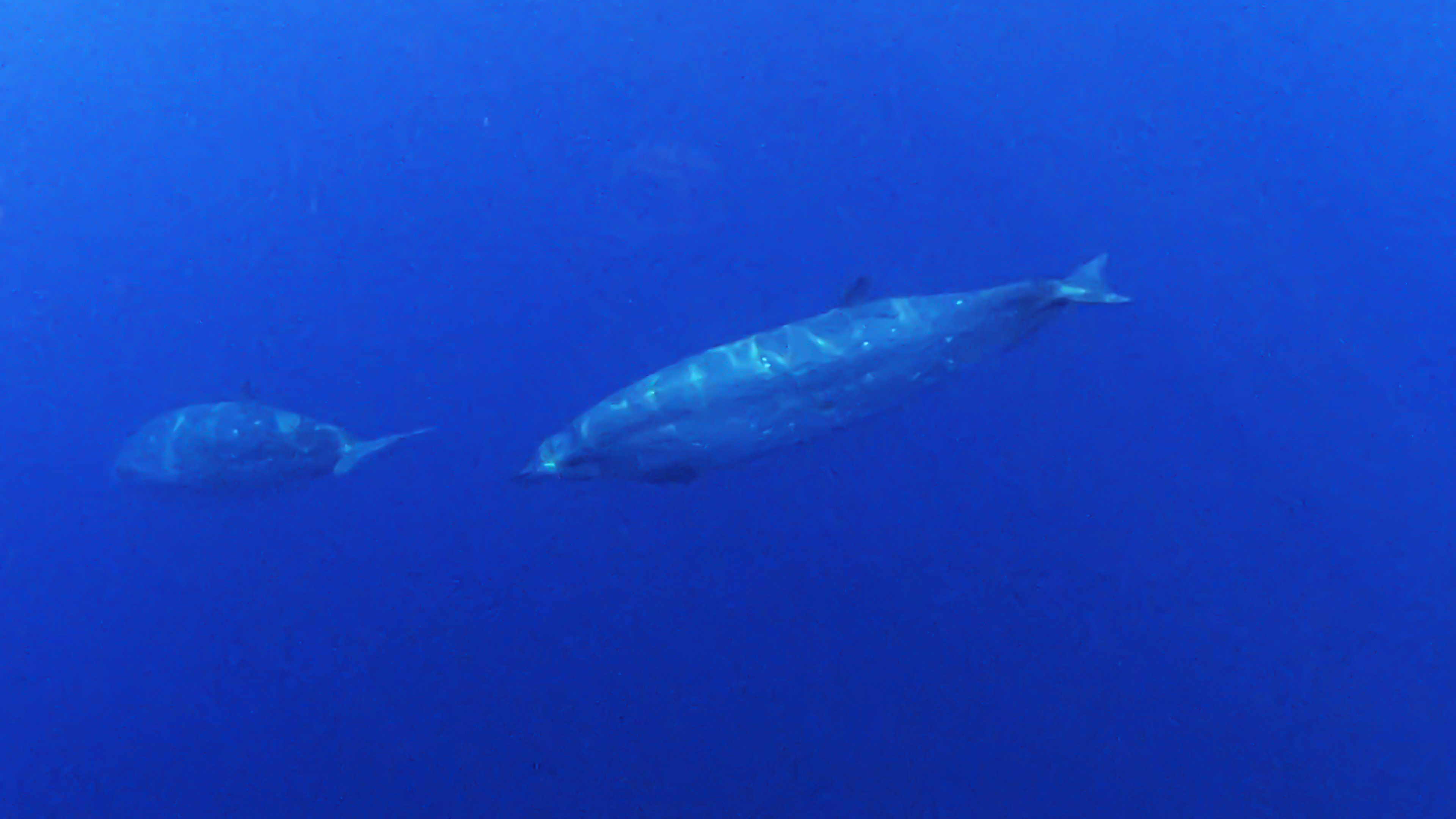
By JES BURNS/Oregon Public Broadcasting
NEWPORT — Engine trouble can be a real drag.
Especially when you’re just a few days into a week-long journey to the Great Pacific Garbage Patch in search of elusive beaked whales.
So when the Oregon State University research mission aboard the R/V Pacific Storm had to turn around in the middle of the ocean in mid-September and head back to Newport, there was a fair amount of disappointment on board.

“It was very clear that we were not going to be able to keep the expedition as planned. We needed to change things up,” research leader Lisa Ballance said.
Beaked whales are some of the shyest marine mammals around. They often spend their time far away from land, hunting in the deep open ocean. They look like longer, chubbier dolphins. Six known species have never been seen alive. Scientists only know about their existence because they’ve been found dead.
Ballance and her team were on the trail of what they thought could be a totally new species that had been sighted, but not identified, near the garbage patch. But with more than half their time being eaten up by engine repairs and other delays, the team made the call to look for whales a bit closer to home.
“We know in the seas… right off of Oregon, there are beaked whale mysteries,” said Ballance, director of OSU’s Marine Mammal Institute. “And I’ll be darned if we didn’t have an absolutely remarkable encounter…. I still cannot believe it.”
The Pacific Storm was about 200 miles off the northern Oregon coast when audio specialist Annamaria DeAngelis picked something up while listening through a hydrophone towed behind the ship. It was the sounds of beaked whale echolocation. There’s no light in the deep water where the whales hunt, so they use sound to locate squid, which is thought to be their main prey. It’s similar to the method used by bats.
And then the signal stopped. The team knew that meant the whales were on their way to the surface to breathe.
The research crew all rushed to the deck. The seas were rough with high winds, difficult conditions to spot any whale. An hour passed. Then, they got lucky.
Two whales appeared.
“Amazingly, they were what I would call curious. They stayed with the ship. We pointed the ship and went down-swell. And so did they . And we got great looks at them,” Ballance said.
The whales swam so close to the Pacific Storm that the crew was able to collect a small sample of skin with a crossbow-fired biopsy dart. That skin sample was key to positively identifying them as Hubbs’ beaked whales.
The Hubbs’ beaked whale was first discovered dead and washed up on shore in the 1940s in Southern California. Ballance says a National Oceanic and Atmospheric Administration science team observed the species alive off the coast of Oregon in the mid-1990s, but as far as she knows, none had been sighted alive since.

But more important scientifically than the sighting of Hubbs’ beaked whales was the audio recording they captured. For the first time, researchers were able to positively match the Hubbs’ to its song.
“Linking the acoustic call with a visual description of a poorly known whale – and confirming the species identification through genetics – is an extremely powerful tool. Because instantly we know the animal occurs everywhere that call has been recorded,” she said.
Now the task for the team is to find where that call has been recorded before so they can start to get a sense of their range. The team hopes to publish a paper with their results next year.
“It was such an unlikely event to happen, especially on the heels of what we were sort of thinking was a largely failed expedition… It was an absolutely extraordinary win.”
To read a previous YachatsNews story on the beaked whale expedition go here


